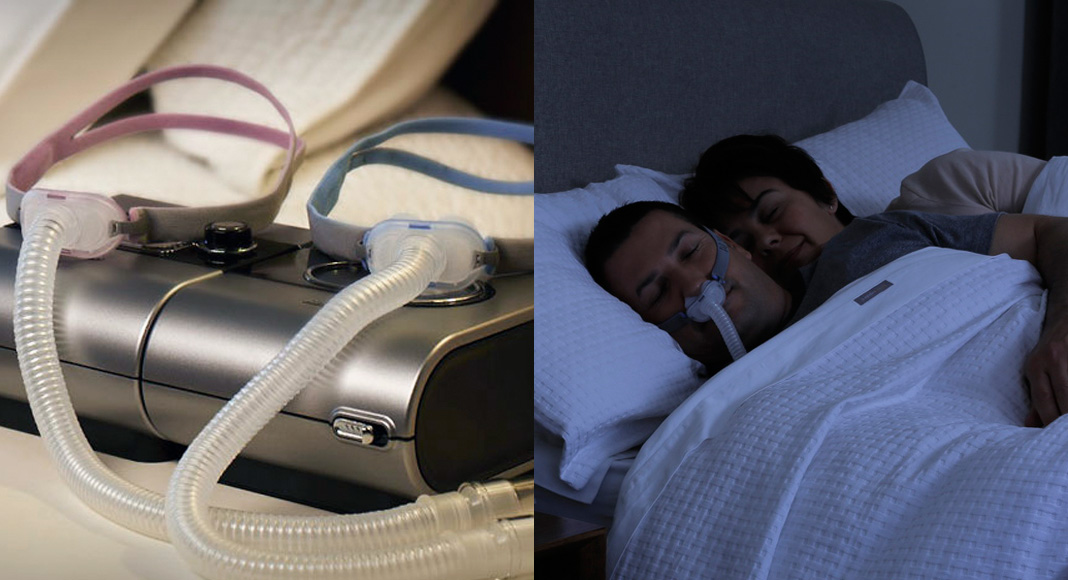Professor John Stradling is a consultant respiratory physician and Emeritus professor of respiratory medicine at Oxford University. He is an expert in the field of obstructive sleep apnoea, a condition which causes sleepiness and can be a risk factor in road traffic collisions. John is a member of the OSA Partnership Group which, in 2015, launched a Four Week Wait Campaign to reduce waiting times for diagnosis and treatment of obstructive sleep apnoea.
Firstly, what is Obstructive Sleep Apnoea?
Obstructive Sleep Apnoea (OSA) is a condition which causes pauses in breathing due to narrowing of the airway behind the tongue while a sufferer is asleep. Some people can suffer from OSA and have no symptoms, but about a quarter of people with OSA have a more serious form of the condition, known as Obstructive Sleep Apnoea Syndrome (OSAS), which causes symptoms such as excessive sleepiness in the daytime.
Sufferers of OSAS are often completely unaware that they have it. Loud snoring is one of the symptoms, so it is often the sufferer’s spouse who is more aware of the disturbed breathing during sleep.
Tell us about the OSA Partnership Group
The OSA Partnership Group is a loose association of many people who have an interest in OSA for different reasons. Medics, academics, the Road Haulage Association (RHA), the RAC and the Sleep Apnoea Trust Association (SATA), all of whom have come together after it became increasingly clear that there was a lack of understanding of the problems facing professional drivers with suspected OSA. The Group also includes the relative of a man who was killed by a driver with undiagnosed OSAS, who therefore has a very personal interest in OSAS.
How big is the problem of undiagnosed OSA in truck drivers?
We do not know how many collisions involve a driver who has fallen asleep. In my opinion, when we hear stories about trucks jack-knifing, that is often due to the truck driver falling asleep. A truck does not just jack-knife; it happens when a driver slams on the brakes, especially while correcting a drift out of their lane, which is likely to happen if a driver momentarily nods off.
About 1 in 10 middle aged men have OSA, although not all have it bad enough to need treatment. Being overweight is unfortunately a risk factor, and we know that truck drivers often tend to be overweight as a result of their potentially sedentary life style.
In a company with 100 truck drivers, it is likely that at least two or three of them will suffer from OSAS, severe enough to interfere with vigilance while driving. Put into perspective, this is not a trivial issue.
What is the process for a truck driver who suspects they might have OSAS?
If a truck driver suspects they have OSA with sleepiness sufficient to impair driving they should stop driving, as is the case with any other cause of excessive sleepiness. However, as soon as they receive treatment then can return to normal driving duties. This is where the problem lies. Currently, truck drivers who suspect they might have OSAS are reluctant to come forward and tell their manager about their concerns, for fear of losing their job as they wait for treatment.
Are these fears justified?
In a bad company, a truck driver may be fired. In a good company, the manager will say: “You need to go to your GP and get treatment. We’ll take you off driving duties for a few weeks but as soon as you get treatment we’ll get you back on the road.” Unfortunately, the journey to getting treatment is very variable across the country but may take a lot longer than a few weeks. While the NHS makes it compulsory for patients to be seen within 16 weeks, that is for initial treatment, so people can be waiting longer for treatment.
This makes it difficult for fleet managers. If an employee informs them they suspect they have OSAS and are subsequently involved in a collision, the manager is responsible and, in the worst-case scenario, could be charged with corporate manslaughter. For this reason, a manager has no choice but to take such an employee off driving duties until treated.
What is the background to the Four Week Wait Campaign?
The OSA Partnership Group launched the Four Week Wait Campaign because we believe that every truck driver who feels they might have OSA, should be seen and treated within four weeks. This would encourage more truck drivers with suspected OSAS to come forward.
What is the treatment for OSAS?
The treatment is very simple. It involves wearing a continuous positive airway pressure (CPAP) mask at night, to gently raise the air pressure in the throat. This keeps the airway open, normalises breathing, and stops the snoring.

What are the warning signs for truck drivers?
Often, sufferers have no idea they have OSAS, other than experiencing increased daytime sleepiness or tiredness.
We know that truck drivers are some of the safest drivers on the roads. So, if they are having feelings of tiredness, they may already have taken action themselves to have a break from driving, or take extra special precautions, which, again, is testament to how safe they are. However, unless they know about OSAS, they may not be able to connect their feelings of excessive sleepiness with the potential of having the condition.
Is the fleet industry in support of the Four Week Wait Campaign?
When we first started to raise the issue with employers and drivers they felt we were getting at truck drivers. This was absolutely not the case, treating OSAS is a win for everyone with considerably increased quality of life, as well as improved vigilance while driving.
When any driver gets behind the wheel they are making a decision about their safety. It is up to individuals to recognise whether they are safe behind the wheel and they need the right support should they recognise they have a risk factor that needs treating.
In your opinion, how can fleet managers support drivers who suspect they have OSA?
Some argue for mandatory employee screening programmes involving sleep studies, but I am not in favour of this approach. A truck driver can have OSA on a sleep study and not experience any daytime symptoms, so we don’t want to make people have treatment they don’t need.
It should be about identifying the people who know that they have daytime symptoms of sleepiness and quickly getting these people the treatment they need to drive safely.
I’m in favour of companies raising the profile of OSAS, informing employees of what it is, and encouraging them to come forward if they think they might be affected, safe in the knowledge that their jobs are secure.
If companies wish to offer private treatment to enable employees to be assessed and treated more quickly, that’s great – it is not very expensive to treat OSA. In fact, it is cheaper than the cost of a truck tyre! And compared with the cost associated with a serious collision, it is a miniscule cost.
How can fleet managers raise awareness of OSA?
They could put posters in the staffroom, issue letters/emails to employees, or ask their Occupational Health & Safety (OHS) leaders to discuss the issue with all drivers.
How can people support the Four Week Wait Campaign?
Writing to their local MP is one of the things that will have the most impact and has the potential to work faster than anything else.
I’d also encourage people with an interest in OSA to visit the OSA Partnership Group website, the Sleep Apnoea Trust Association website and also visit the OSA section of the British Lung Foundation website.



















